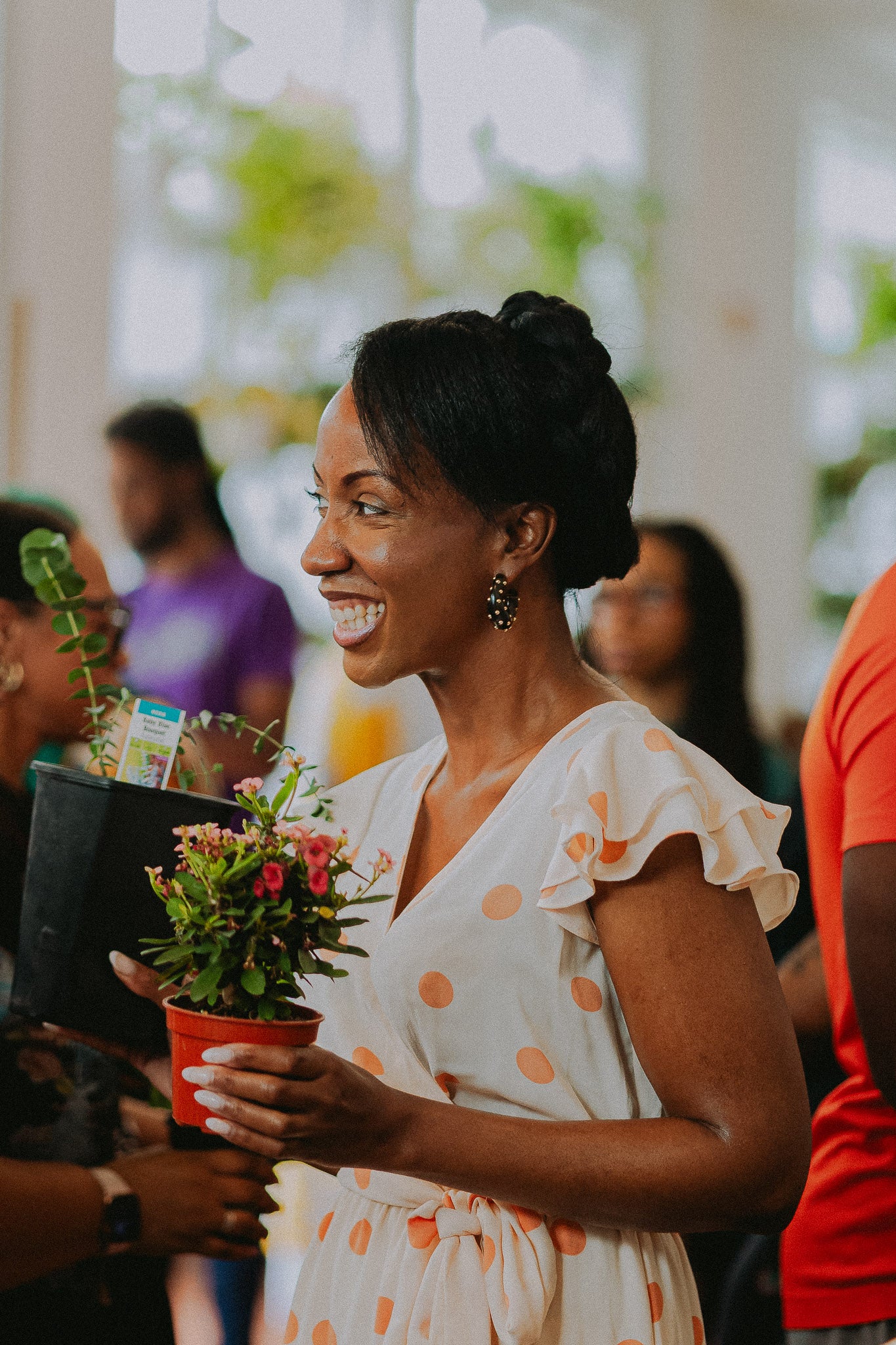Imagine waking up not just to the smell of coffee, but to the sight of your very own coffee plant, its glossy green leaves adding a touch of the tropics to your home. Sounds exotic, right? While you might not be replacing your favorite local café anytime soon, growing a Coffea arabica plant indoors is entirely possible and surprisingly rewarding!
At Plant and People, we love introducing unique plants that connect us to different parts of the world and the stories they hold. The coffee plant, with its rich history and beautiful foliage, is a fantastic addition to any indoor jungle. Let's explore how you can successfully cultivate this fascinating plant right in your living room.
Meet Coffea arabica: More Than Just Beans
Native to the highlands of Ethiopia – the birthplace of coffee – Coffea arabica is the species responsible for the majority of the world's coffee production. As a houseplant, it's prized for its attractive appearance:
-
Glossy Leaves: Deep green, shiny leaves grow opposite each other along the stems.
-
Bushy Growth: It naturally grows into a multi-stemmed, bushy shrub or small tree.
-
Potential Flowers & Fruit: Mature plants can produce fragrant, star-shaped white flowers, followed by green "cherries" that ripen to a deep red.
Can You Actually Harvest Coffee Beans Indoors?
This is the million-dollar question! The answer is: maybe, eventually, with patience and the right conditions. Indoor coffee plants can flower and produce fruit, but it typically takes several years (3-5 years or more) for a plant to mature enough.
Furthermore, coffee flowers usually need pollination to set fruit. Outdoors, this is done by insects. Indoors, you might need to hand-pollinate using a small brush if you're serious about getting cherries. Even then, the yield will be small – certainly not enough for your daily cup, but perhaps enough for a novelty roast!
The key takeaway: Grow the coffee plant primarily for its beauty as a tropical foliage plant. Consider any flowers or fruit a delightful bonus!
Creating the Ideal Indoor Coffee Corner: Care Essentials
Coffea arabica thrives when its native tropical highland conditions are mimicked. Here’s how:
-
Light: Bright, indirect light is crucial. Think of the dappled sunlight under a forest canopy. An east-facing window is often perfect, providing gentle morning sun. South or west windows can work if the light is filtered by sheer curtains or if the plant is placed a few feet back to avoid harsh, direct sun, which can scorch the leaves. Insufficient light leads to leggy growth.
-
Watering: Coffee plants like consistently moist soil, but never soggy. Water thoroughly when the top inch of soil feels dry. Ensure the pot has excellent drainage, and don't let the plant sit in a saucer full of water, as this leads to root rot. Reduce watering slightly in the winter when growth slows.
-
Humidity: This is perhaps the most critical factor for happy indoor coffee plants. They crave high humidity (50% or higher). Our heated/air-conditioned homes are often too dry. Signs of low humidity include brown, crispy leaf edges. To boost humidity:
-
Use a Humidifier: The most effective method.
-
Create a Pebble Tray: Place the pot on a tray filled with pebbles and water (ensure the bottom of the pot isn't submerged). Evaporation increases local humidity.
-
Group Plants Together: Plants naturally release moisture through transpiration, creating a more humid microclimate when grouped.
-
Misting: Provides only a very temporary boost and is generally less effective than other methods.
-
Temperature: Average room temperatures (65-75°F / 18-24°C) are generally fine. Avoid placing your plant near cold drafts, heating vents, or radiators, as sudden temperature fluctuations can stress it.
-
Soil: Use a high-quality, well-draining potting mix. A mix designed for houseplants, perhaps amended with a little extra peat moss or coir for moisture retention and perlite for drainage, works well. They prefer slightly acidic soil.
-
Feeding: Fertilize every 2-4 weeks during the active growing season (spring and summer) with a balanced liquid houseplant fertilizer, diluted to half strength. Reduce or stop feeding during fall and winter.
Styling Your Tropical Treasure
The coffee plant's lush, dark green foliage makes it a versatile addition to your home décor:
-
Statement Piece: A larger, well-grown coffee plant can be a stunning focal point in a bright corner.
-
Tropical Groupings: Pair it with other humidity-loving tropicals like ferns, calatheas, alocasias, or palms to create a mini-jungle vibe and boost ambient humidity.
-
Pot Choices: Its classic green leaves look great in almost any style of pot, from simple terracotta (remember it will dry out faster!) to modern ceramic planters.
Troubleshooting Common Coffee Plant Woes
-
Brown Leaf Tips/Edges: Usually indicates low humidity. Increase humidity levels.
-
Yellowing Leaves: Can be caused by overwatering, underwatering, or nutrient deficiency. Check soil moisture carefully before watering. If feeding regularly, consider if the soil pH is off.
-
Dropping Leaves: Often due to sudden changes in temperature, light, or watering stress. Try to maintain consistent conditions.
-
Pests: Keep an eye out for common houseplant pests like spider mites or scale, especially if humidity is low. Treat promptly with insecticidal soap or neem oil.
A Rewarding Grow
Even if you never harvest a single bean, growing a Coffea arabica plant indoors is a rewarding experience. Its beautiful foliage brings a touch of the exotic, and caring for it connects you to the story of one of the world's most beloved plants.
Ready to add this tropical beauty to your collection? Visit Plant and People to find healthy coffee plants and get all the supplies and advice you need for success!









